
Shoko Yanai

Otama
Kotani Zenzaemon, a ronin who has a side job making brushes in a tenement house in the back alley, is watching Omine, who lives with him, from Kichizo, a resident of the same tenement house and a boatman. is asked to Kichizo and Mine have eloped and got married, but she feels empty in her boring daily life, and she wants to take a break by crossing the bridge over the river. On the other hand, Kichizo forbids him from crossing the bridge, fearing that his whereabouts will be known to others. Zenzaemon superimposes the appearance of these two people on the appearance of his former self and his wife, whom he killed himself.
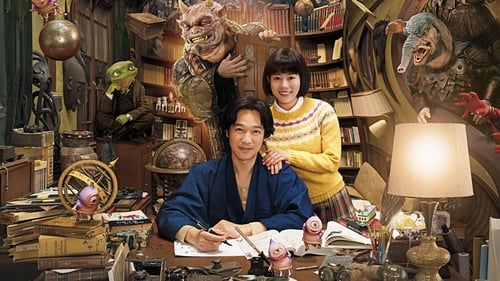
Kin
Set in an alternate universe, the ancient capital of Kamakura is a vibrant town where fantastical creatures live alongside humans. Akiko is a cheerful publishing assistant who moves into town after marrying Masakazu, a popular mystery writer. Akiko is surprised by the unusual town but enjoys the new curiosities surrounding her. However, just as she was beginning to settle in, a trifling incident sweeps her spirit to the underworld too soon. Convinced that destiny has something else in store for his wife, Masakazu journeys into the underworld to bring back Akiko’s spirit.

The film stars Seishiro Kato as Rantaro who is sent to a ninja training school by his parents. During the summer, their teacher is invaded by a group of rival ninjas culminating in a race to ring a bell on top of a mountain.

A hidden gem has arrived in the form of a stage play performed in tribute to a pair of Japan’s greatest stars. On the 35th anniversary of his becoming an entertainer Matsudaira Ken chose to honor his mentor, the legendary superstar Katsu Shintaro by portraying Zato Ichi, the Blind Swordsman in a play based on the original film on the same stage that Katsu had played the role 40 years before in a stage presentation. Not pleased with the direction that Zato Ichi’s image had been taken in some productions, he has breathed new life into the character by following the image that Katsu Shintaro had created for his signature role.

Mrs. Mutsuta
"Tsubaki Sanjuro" is a remake of Sanjuro (1962) by Akira Kurosawa. Sanjuro returns with sharper, faster, subtler sword, talking and perception. He uses them to settle the trouble and uses them good!

Shige's Friend (voice)
The Yamadas are a typical middle class Japanese family in urban Tokyo and this film shows us a variety of episodes of their lives. With tales that range from the humorous to the heartbreaking, we see this family cope with life's little conflicts, problems, and joys in their own way.

Shizuko
A middle-aged journalist looking to make her big break. After working the same beat on the "women's page", Yumiko gets promoted to editorials.

Nui Hatanaka
A widow and her two sons, Seitaro and Koji, live in the small town of Komori, where Buraku people are forced to reside. The two boys are continuously harassed by their teachers and classmates through their childhood as a result of their Buraku heritage. In the midst of the 1918 Great Rice Riots in Osaka, Seitaro meets with Asako, the daughter of a rice shop owner, and falls in love with her. She too is of Buraku descent. At the same period, Hideaki, an old friend of the brothers returns to Komori, and he along with Koji and the townspeople create "Zenkoku Suiheisha", the National Levelers Association, an organization pledged to build a bridge over the river of discrimination, making all people equal in every way.

One day, Mori no Ishimatsu (Kankuro Nakamura

The son of a gang leader boss is kidnapped by someone and demands the disbandment of the gang. A group of five mean high school girls who form a "high heels group" will face them

After returning from the Burmese front in WWII, a man finds trouble brewing back home.

Film version of the popular TV drama based on the life of painter Kiyoshi Yamashita. Sent to an institution for mentally handicapped children by his parents, he began creating artworks using torn strips of paper. After running away to avoid army conscription, he began his wanderings around Japan, encountering many scenes which he would recreate as torn paper art from his amazing photographic memory. He was known as the Japanese Van Gogh, and the series depicted his many encounters with both people and places on his journeys.

The story is set in Bakumatsu and revolves around the Bunta Sugawara character, a yakuza (of course :) but instead of a modern yakuza/gangster, he's a gambler/bakuto). After he kills someone and gets wound, is saved by a blind woman (Mitsuko Baishô), who took care of him. They has a happy time under the protection of the Tomisaburo Wakayama character, an oybun. But of course, happy time doesn't last long. The story is also related to Okada Izo and the Shinsengumi (w/ Kondo Isami played by Makoto Sato)

Ine Miki
About Soviet and Japanese volley-ball players who are both rivals and friends. The events cover the period from the 1976 Montreal Olympics to the eve of XXII Olympics in Moscow.

Kitamura
A man whose son has been murdered pushes to create laws to financially protect victims' families.

Chiyo
Famous detective Kindaichi solves a series of mysterious murders in a wealthy family. An excellent blend of intrigue and betrayal, set against the backdrop of wealth, this film is loaded with twists and turns and surprises at every corner.
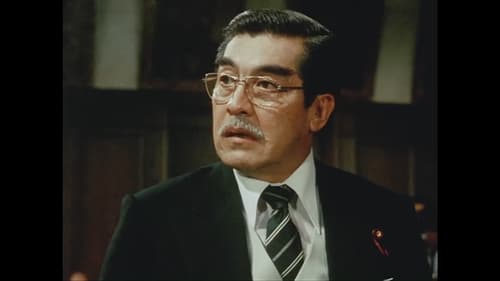
When bribe money from a rigged election funnels into a dam construction project, collusion, lust, greed and even murder are on the ballot.
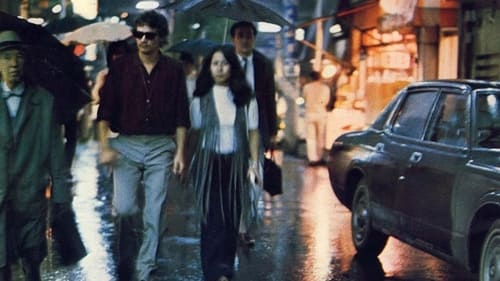
Mrs. Shimezu
The plight of U.S. Army deserters from Vietnam on the run in Japan, centering on the culture clash between the troubled Americans and the Japanese who try to help him.

The struggles of a low-ranking samurai (Nakamura) coming to terms with the end of the Tokugawa shogunate and the end of Japan's feudal age with the 1868 Restoration.

Second part of the Zenka mono series.

Sixth entry in the Bakuchi-uchi series.

Detective's Wife
A private detective is hired to find a missing man by his wife. While his search is unsuccessful, the detective's own life begins to resemble the man for whom he is searching.

A comedy about a good-natured train conductor Shinsaku helping his old friend Miwako find her missing brother.

Film directed by Kenji Misumi.

Ryosuke Kotaki's life motto was his grandfather's will, "Study, make money, drink alcohol, and win the first prize". So, first of all, he went to Osaka to win the first prize with favorite shogi. In the car, he hit it off with a woman named Okichi and decided to live in the Shogi Kaisho, which is run by Okichi's father, Yoichi. Ryosuke's skill was strong, and he was happy to make a lot of money in gambling shogi. However, he lost to a middle-aged man by dropping four cards. This man was actually Heihachi Kudo, who is said to be the best of both worlds in the Kansai chess world at the time...

The film is set in Kyoto at the end of the Tokugawa period, when there is a fierce clash between the supporters of the Emperor, who are fighting for the overthrow of the Shogunate, and the Shinsengumi squad, who are chasing them. Suddenly, a mysterious masked warrior appears, on a white horse he is called Tengu from Mount Kurama and he opposes the Shinsengumi.

The Sengoku Era was coming to an end. The monopoly of the ever powerful shogun, Ieyasu Tokugawa, was at a near. Only one man was brave enough to stand in Ieyasu's way - A lone wolf samurai by the name of Kagekatsu Uesugi. Inspired by Uesugi's courage to revolt, a young samurai warrior, Touzou Kuruma decides to join the fight. Their target: the Tamonyama Castle.

Nui Higaki
Fifth film in the series. When Kyoshiro, in a moment of weakness, saves the life of a woman being attacked on the road, he quickly finds himself entangled in a conspiracy involving a corrupt chamberlain, a wily merchant, the survivors of a pirate gang, and a missing treasure trove.

Chisa
Nemuri Kyoshiro, a youthful and cynical ronin with unparalleled skill, is approached by both sides in a game of corruption, ambition, and double crosses. The leader of the Kaga clan, who thinks he has killed his smuggling partner, fears that the shogunate will discover his illegal activities. He learns of evidence that will prove his guilt. Meanwhile, his partner is not dead, and, assisted by a master of Shorenji boxing, is looking for revenge and for his loot. The Kaga leader sends the beautiful Chisa to enlist Nemuri's aid. The unexpected happens: the hard-bitten Nemuri falls in love. Can he protect her, topple the criminals, and avoid the boxer's deadly skill?
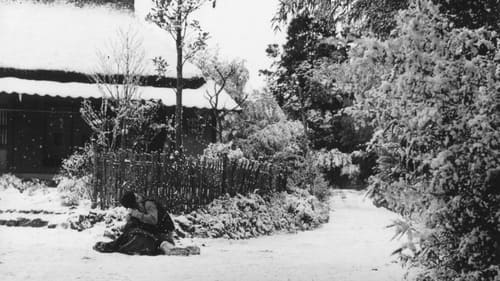
Omitsu
Based on a novel by Tsutomu Mizukami, this haunting melodrama focuses on a young bamboo worker who takes his father's prostitute as his wife.

Okinu

Oshima / Onaka
When a corrupt magistrate rapes Oshima, Masa (Raizō Ichikawa) avenges her by killing the officer, becoming thereby a fugitive, haunted and grief-stricken by the fact that Oshima committed suicide. Going underground in the gambling world, perpetually hiding from the law, Masa eventually meets a young woman named Onaka, who looks exactly like Oshima. Tales having two look-alike heroines are a commonplace in Japanese period films, a plot affectation inherited from the kabuki theater. Based on a novel by Shin Hasegawa, Nakayama shichiri was already twice filmed in 1930, one version directed by Namio Ochiai, and from which less than 40 minutes survive, the other directed by Kyotaro Namiki. Both are silent films, preserved by the Makino film institute.

Okinu

Auttami
An Indian prince leaves his world of comfort and riches behind to wander and meditate for six years in search of spiritual enlightenment. Siddartha (Cojoin Hong) turns his back on the old religion when people are starving needlessly and holy rituals include human sacrifices. During his meditations, he is tempted by erotic dancing women, demons, and the evil machinations of his criminal cousin. Devastate to attain the spiritual perfection and become the Buddha. He travels to convert followers by his kindness and wisdom, gaining a multitude of believers when he stops an elephant from crushing a local priest. Buddha of course goes on to become one of the great religious leaders of the world.

Oborozukiyo
Hikaru Genji, the haunted romantic hero of Lady Murasaki Shikibu’s “Genji Monogatari” (Tale of Genji) comes to life in this new tale of his further romantic adventures. Young Genji, the emperor’s illegitimate son cuts a swath through the women of the imperial court, while still mourning the spirit of his late mother who died while he was still a child. Driven to an obsession with the emperor’s new concubine, Lady Fujitsubo, whose resemblance to his late mother originally caught the eye of the emperor, young Genji embarks upon a reckless affair with her that could cost him his life.

Okinu
Asakichi beats a ganster, Sada, in a physical fight, leading to recognition by Sada's clan boss. When Kotoito, the geisha Asakichi is in love with, is kidnapped by a rival clan and sold to a a house of pleasure, Asakichi and Sada set out to rescue her.

Shikiko Oba is nimble with her fingers and teaches dressmaking and designing. Among her pupils are Rinko, Katsumi and Tomie. Ginshiro, who is as shrewd as the shrewdest of the older generation of dyed-in-the-wool Osaka businessmen, steps into picture and Shikiko soon feels that he is indispensable to her. But the advent of a man in their midst breaks up the harmony that has existed among the four women, as gradually he forces himself on them with promises of love.

Disguised as a beggar monk, Ryunosuke is harassed along the road by the rowdy members of a country dojo or fencing school malingering outside their fencing hall. The third film in the Satan's Sword trilogy.
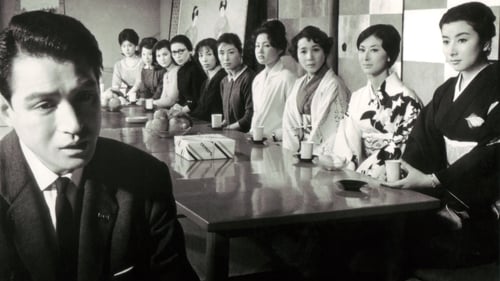
Shio Shimura
Kaze is a philandering TV producer. His wife and nine of his mistresses conspire to kill him. However each woman would rather keep him alive, as long as she was the only woman in his life.

The story of Sasaki Kojiro, a young swordsman, and his quest to train under master Seigen and develop his own style.
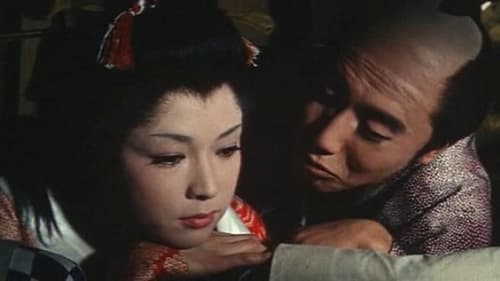
Omachi
Fascinated with women from an early age, Yonosuke had his first sexual encounter at the age of seven. From that day on, he recklessly and forwardly pursues women, feeding his fascination and experience. As Yonosuke's salacious behavior brings much cause for shame to the family, his father eventually breaks relations with him. Expelled from the family, 19-year-old Yonosuke embarks on a pilgrimage of lust, traveling far and wide to acquaint himself with women of all walks.
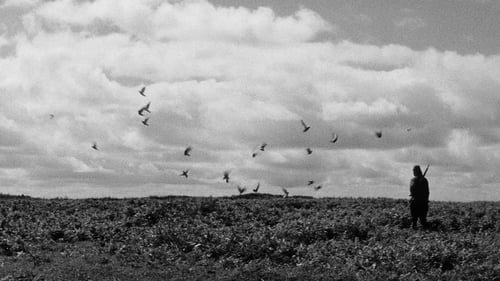
Hinannmin no Shôjo
After the Japanese defeat to the Russians, Kaji leads the last remaining men through Manchuria. Intent on returning to his dear wife and his old life, Kaji faces great odds in a variety of different harrowing circumstances as he and his fellow men sneak behind enemy lines.
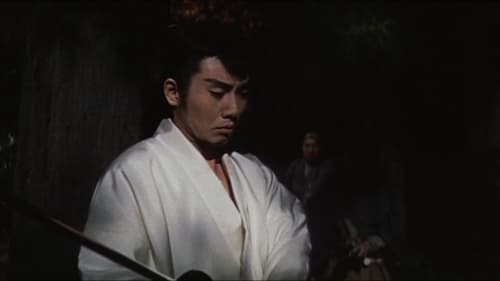
Otoyo
The sequel to Daibosatsu tôge (1960) and the second of the trilogy follows the adventures of Ryunosuke Tsukue after he is blinded.

Oyasu
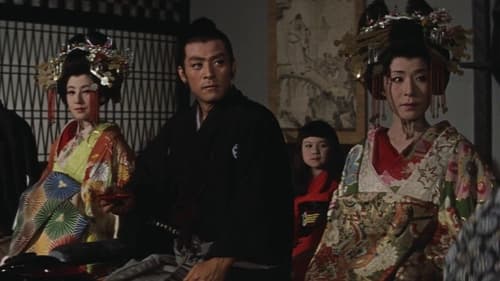
Ohama / Otoyo
The Dai-bosatsu toge trilogy is based on Kaizan Nakazatos unfinished long series of novels (41 books, written from 1913 to 1941). Set in the last period of the Tokugawa Shogunate, Daibosatsu Toge tells the story of Tsuke Ryunosuke, a nihilistic swordmaster who doesn't hesitate to kill anyone, bad or good.

This is the story of a blind masseur who tricks people, steals, and kills; he is the anti-Zatoichi
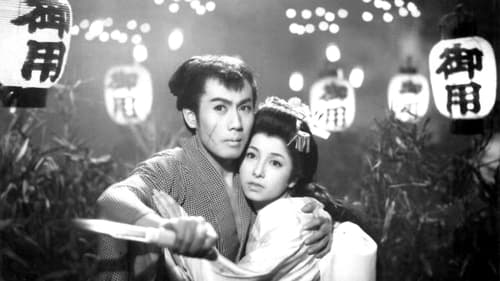
The film depicts the scarring of Yosaburo at the hands of yakuza thugs who catch him with mistress of the gang boss. Despite the physical and emotional scars he now carries with him, Yosaburo falls for a young noblewoman. The rest of the film follows the two as they fend off attacks from gangs and the police.

The exciting story of Jirocho and his yakuza gang that controlled the area of the Tokaido during the latter days of the samurai era. Awesome fighting from Katsu Shintaro as One-Eyed Ishimatsu highlights this great tale taken from Japanese history!
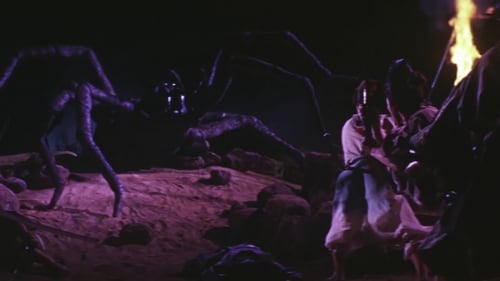
A demon-faced monster seeking revenge appears in the forms of a gigantic ox and a huge spider! The young Genji warrior protects the Fujiwara Clan and the beautiful lady in tragic love! A grand visual epic told with mesmerizing extravagance!

Hiroko
Kikuji is the scion of an Osaka merchant family whose traditional power is matrilineal. Instructed by his overbearing mother and grandmother to give them an heiress for the family business, he stands by helplessly as his wife is thrown out of the house for producing a son. Driven to a life of dissipation - his mistresses also fail to produce daughters - in the end he is just too tired to care.

Okatsu
A gorgeous tragic love picture scroll depicting a beautiful woman who weeps over her strange fate and falters in her search for true love!

Princess No.4
Once upon a time, Okuro (Ayako Wakao), a young female racoon, lived poorly with her drunken father. One day after they disguised themselves as parasols, they were wrongly brought to the Racoon Palace, where the young racoon princess (also Ayako Wakao) made a mess of her arranged marriage with the beautiful racoon prince (Raizô Ichikawa). Pretty princess ran away. In order not to spoil the promising marriage, people tried to make use of resemblances between Okuro and the princess. Before long, Okuro and the Prince fell in love with each other...

Otama

Osaki
Fate begins to smile upon young Chonosuke Tokugawa, son of eleventh Tokugawa Shogun, after some twenty years of life as a dependent at his step-brother's castle, when the ruler of the Takatori Clan suddenly dies leaving no heir and despite the protest from Minister Horio, it is decided that young Chonosuke is to succeed as ruler of the clan. Horio determines to murder Chonosuke on his way to Edo so that his own grandchild may rule the Takatori Clan. "Odd" Han, a travelling gambler happens to stop at the inn where Chonosuke's party is staying in secret. The assassins come to attack Chonosuke on the riverbank where he is viewing the fireworks alone but are driven off by Han. Now Chonosuke travels with Han disguised as a gambler during which he begins to learn the hardships of the peasants and is struck with the contrast between the life of a feudal and those whose labour provides his luxurious living.
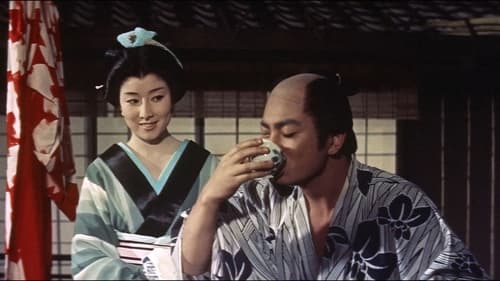
Legendary yakuza Shimizu Jirocho and his 28 henchmen travel the unruly path from a 'Fire Festival' in Akiba to a decisive battle by the Fujigawa.

Mitsue

Okinu
Lord Mito Mitsukuni, the vice-shogun of the whole country, left the family estate and went on a trip to various provinces with his students Sukesaburo Sasaki and Kakunoshin Atsumi. At an inn in Sunagawa, Mitsukuni exposed and punished an evil judge who had fallen in love with a townsman's wife. However, on the night he stayed at Nihonmatsu Castle, Mitsukuni found out that this incident was a performance organized especially for him…
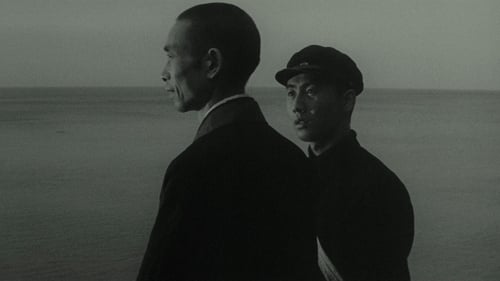
Woman at Gobancho
Learning of his family's collapse, acolyte Goichi, sent to study silently at the Temple of the Golden Pavilion, must endure acute psychological distress.

While transporting a bride-to-be in a closed carriage (kago) while during a thunderstorm, a group of servants and onlookers suddenly come upon an apparition of a ghostly white-draped female figure floating down to the ground. As she turns to face the crowd, the woman reveals the disfigured right side of her face. As the procession stands in utter horror, the ghost then takes flight again and down a side street. After the shock wears off, the bride is checked on and everyone is safe in the group. Once the wedding party finally arrives at the groom's home, they apologize for the delay... and proceed to open the kago, only to realize that the bride-to-be is now missing... and all that's left in the carriage is a single white snake slithering about.

Shinobu
Suzunosuke faces perhaps his wildest foes. This evil gang is lead by a one-eyed birdman and other demonic creatures.

The magical swordsman battles a gang of cutthroats, who are led by a peg-legged villain.

The swordsman again crosses paths with the murderous Devil Mask Gang -- who as the name suggests, all wear hideous devil masks.

In the first two films we learn the character's origins, including his childhood and how he learned his fighting skills. Later, he must face his friend, who has joined a gang of criminals.

First of nine films based on the novel. The first live-action adaptation focuses on the origins of how Akadô Suzunosuke learned his skills as a swordsman.

Suzunosuke visits a martial arts master and tries to learn the 'Vacuum Slash,' a secret technique of producing tornadoes.

Aya
A poor peasant, after years of scraping, becomes a rich and powerful Osaka merchant. Mizoguchi Kenji's final project; he died before completing it and directing duties turned over to Yoshimura Kozaburo.
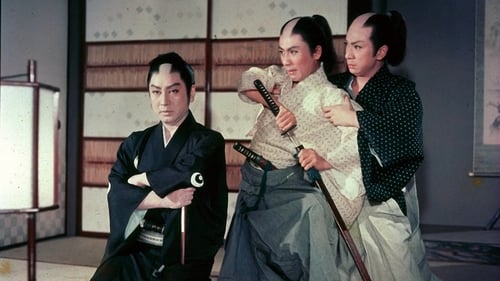
Utagiku
During the bloody era of the Tokugawa Shogunate collapse, a man appeared capable of overthrowing a corrupt government and ending the feud between the Choshu and Satsuma clans. This is the story of Tsukigat Khanpayit, the sword maker of the Choshu clan, who, along with Katsuro Kogoro and Sakamoto Ryoma, sought to fulfill the dream of a new peaceful era in Japan. Can he realize his ideals or will he die in the chaos of internecine fights...

Early film by Kenji Misumi.

Otsuru

The film adaptation of the famous tragic love story of the young samurai Shirai Gonpachi and the beautiful courtesan Komurasaki.
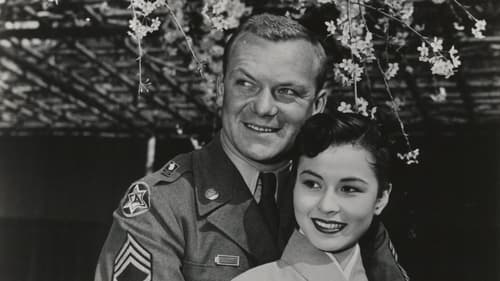
Satsumi (uncredited)
A racist sergeant stationed in post-war Japan finds himself softening towards the children and falling for a local woman.
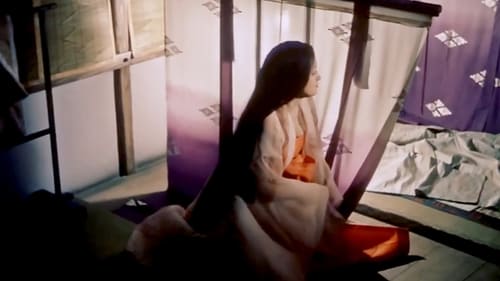
Shigeko
Special Forces commander Captain Tadamori returns to Kyoto after successfully defeating the uprising of pirates in the western sea of Japan. But because the high courtiers dislike career soldiers gaining power and influence, they ignore the will of ex-Emperor Toba and refuse to reward the captain. Reward recommender Lord Tokinobu is punished, and the captain sends his son Kiyomori to the Lord's residence, where he falls in love with Tokiko, the Lord's daughter. Meanwhile, Kiyomori finds out that he is possibly the ex-Emperor's son... Written by L.H. Wong

























































